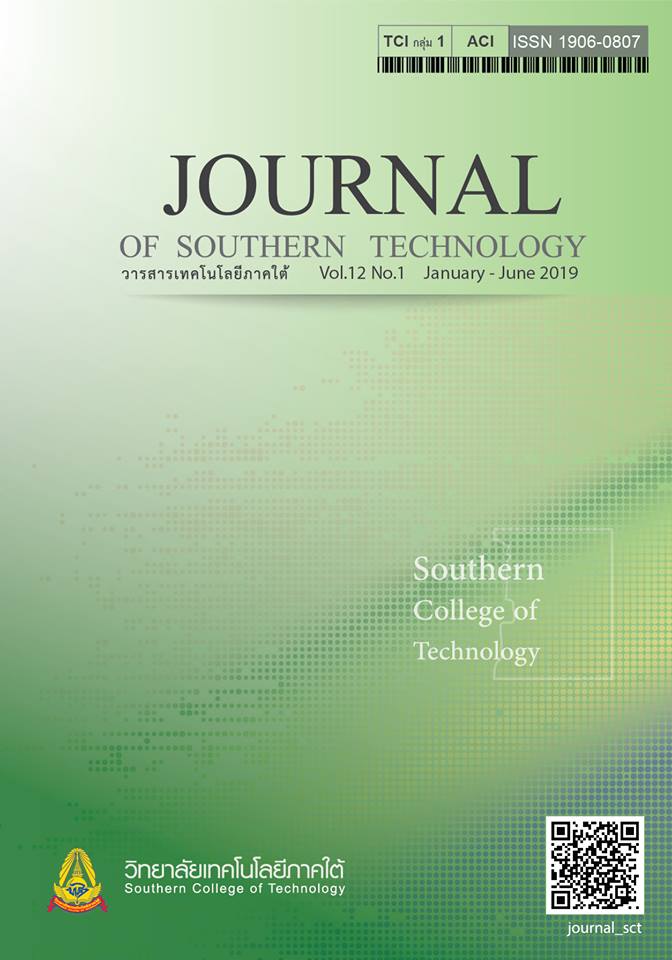A Comparison of Concurrent Validity and Divergent Validity Happiness Scale of PERMA Theory
Main Article Content
Abstract
This research aimed to compare concurrent validity of Thai Happiness Scale based on PERMA (Thai-PERMA) and test divergent validity. The sample group was 400 citizens in Sa Kaeo Province derived from multi-stage sampling. Research instruments consisted of happiness inventory for Thai-PERMA, Thai Mental Health Indicator, Thai Happiness Scale and BDI®-II. This study was done in two phases: 1) concurrent validity comparison by performing pair-wise comparison between two correlation coefficients and 2) divergent validity testing by analyzing Pearson’s product moment correlation coefficients.
The research findings were as Follows (1) concurrent validity comparison between the correlation coefficient of 3 pairs of happiness scale as follows: 1) Thai-PERMA and Thai Happiness Scale vs. Thai-PERMA and Thai Mental Health Indicator, Z score was equal to 2.96 at the statistically significant level of .05, 2) Thai-PERMA and Thai Happiness Scale vs. Thai Mental Health Indicator and Thai Happiness Scale, Z score was equal to 3.26 at the statistically significant level of .05, and 3) Thai-PERMA and Thai Mental Health Indicator vs. Thai Mental Health Indicator and Thai Happiness Scale, Z score was equal to .57 without the statistical significance. And (2) divergent validity testing of Thai-PERMA and BDI®-II resulted in the negative correlation coefficient of -.79 at the statistically significant level of .01.
It was concluded that Thai-PERMA developed by the researcher could be applied to measure Thai happiness or it could be one of happiness measurement alternatively.
Article Details
-
Authors must agree to the journal publication rules and allow the editors to edit the manuscripts for publication.
-
Author’s right belongs to the author but Journal of Southern Technology holds the right of first publication and thus allow readers to use the article for the purpose of education but not commercial.
References
Brown, F. G. (1979). Principles of Educational and Psychological Testing. New York: Rinehart and Winston.
Campbell, D. T., & Fiske, D. W. (1959). Convergent and discriminant validation by the multitrait-multimethod matrix.
Psychological Bulletin, 56(2), 81-105.
Compton, W. C., & Hoffman, E. (2013). Positive Psychology: The Science of Happiness and Flourishing (2nd ed.).
United States: Wadsworth Cengage Learning.
Deci, E. L., & Ryan R. M. (2008). Self-Determination Theory: A Macrotheory of Human Motivation, Development, and
Health. Canadian Psychology, 49(3), 182–185
Department of Provincial Administration. (2016). Official Statistics Registration Systems Population and House Statistics
- the Number of Population Separated by Age. Retrieved January 3, 2016, From https://stat.dopa.go.th/
stat/statnew/upstat_age.php.
Kitisuksatid, S., Tongchonlatip, K., Jaratsit, S., Sayprasert, C., Boonyateerana, P., & Aree, W. (2012). HAPPINOMETER:
The Happiness Self-Assessment. Nakhonpathom: Institute for Population and Social Research Mahidol University.
Lowry, R. (2018). Significance of the Difference between Two Correlation Coefficients. Retrieved August 10, 2018, From
https://vassarstats.net/ rdiff.html
Mongkol, A., Wongpiromsan, Y., Tangseree, T., Huttapanom, W., Romsay, P., & Chutha, W. (2009). The Development
and Testing of Thai Mental Health Indicator Version 2007. Bangkok: Agricultural Federative Co-operative of
Thailand Limited Printing Factory.
Pasunon, P. (2015). Validity of questionnaire for social science research. Journal of Social Sciences Srinakharinwirot
University, 18(1), 375-396.
Rachamanee, S., Kornpetpanee, S., & Wongupparaj, P. (2018). Development of the Computerized Dual -Task for
Assessing depression with Electroencephalogram Measurements for Thai Adolescents. Research Methodology &
Cognitive Science, 16(1), 127-137 [in Thai]
Ryff, C. D. (1989). Happiness Is everything, or is it? explorations on the meaning of psychological well-being. Journal of
Personality and Social Psychology, 57(6), 1069-1081.
Sakolkijrungroj, S., Chadcham, S., & Sudhasani, S. (2015). The Development of computerized adaptive testing
program for Thai Happiness Scale. Research Methodology & Cognitive Science, 13(1), 1-17.
Sakulsriprasert, C. (2014). Development and psychometric properties of drinking problems scale for college students
(DPS-C). J Psychiatr Assoc Thailand, 59(4), 355–369.
Schumacher, R. E., & Lomax R. G. (2010). A Beginner’s Guide to Structural Equation Modeling. (3rd ed.). New
York: Taylor & Francis Group.
Seligman, M. E. P. (2002). Authentic Happiness: Using the New Positive Psychology to Realize Your Potential for Lasting
Fulfillment. New York: Free Press.
_______. (2011). Flourish: A Visionary new Understanding of Happiness and Well-Being (1st Free Press Hardcover ed.).
New York: Free Press.
Srireunthong, W., Kongsuk, T., Sukhawaha, S., Lodthanong, S., & Leejongpermpool, J. (2016). Development of
violence severity scale in serious mental illness. J Psychiatr Assoc Thailand, 61(3), 253-266.
Tantipiwattanasakul, P., & Seetalapinan, A. (2011). Happiness Created at the Provincial Level Guide. Bangkok:
Agricultural Federative Co-operative of Thailand Limited Printing Factory.

